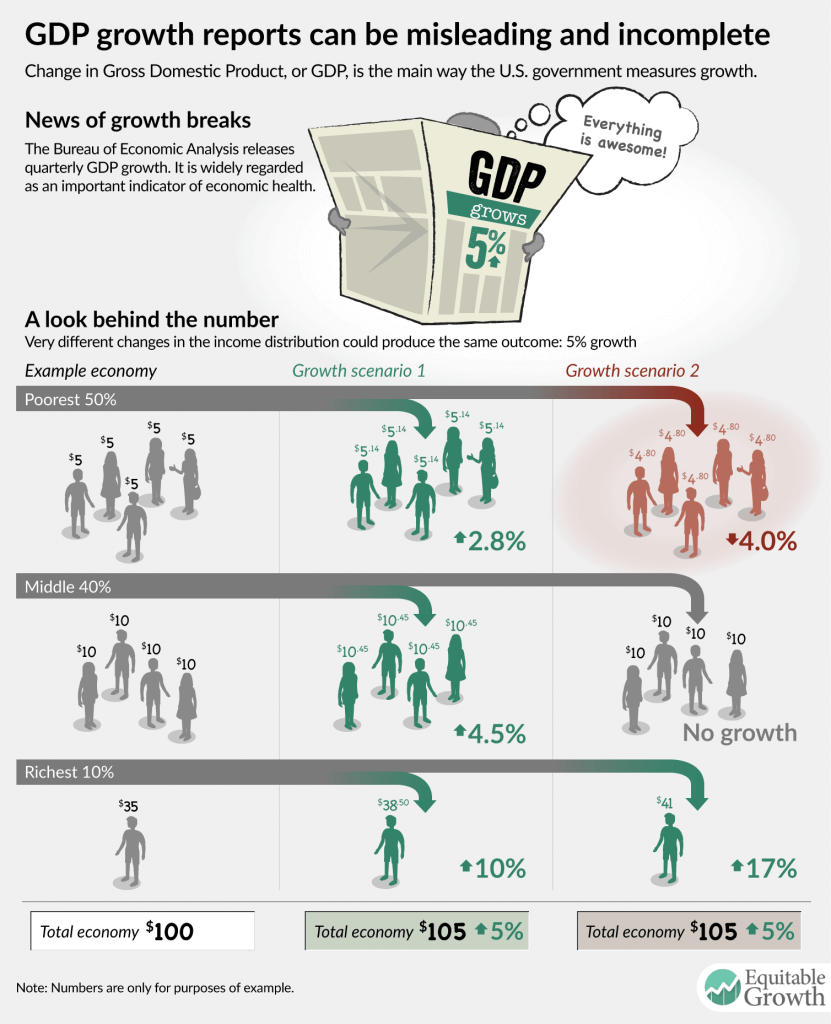
Is a sufficiently revitalized social insurance state and public infrastructure and other public goods provision system what we really need? That is a very difficult and a very hard question.
Let me give a particular partial answer to it. My decision to give this partial answer is, I think, motivated in large part by my perception that the six of us here on this panel agree on too much. There is insufficient Dixit-Stiglitz variety up here on the panel for it to be in any sense optimal.
Therefore let me, for the moment, fly my rootless neoliberal cosmopolite freak
flag. Let try to push back a little against the idea that a better social
insurance state is all we need.
If you think about say the people of rural and semi-rural Kentucky, facing the continued long-term decline of their regional resource-based export industries and increasingly facing global competition for manufacturing industries in which their principal advantage within the United States was a relatively low real wage level, and if you ask “what could have been done to make their lives better over 2009 to 2016”, the answer would have been: Obamacare. Give them health insurance. Give them access to the health care system in a manner that does not require them to risk bankruptcy in order to see a doctor. The Democratic Party did that. And they turned out.
It is true that many of them have spent 2017 in wonder, staggering around, telling reporters that they really don’t think Trump will get rid of their Medicaid, or make their Exchange policy either unaffordable or so riddled with coverage holes that it is nearly useless. But they voted for Trump. And they will vote for Trump again.
Material standards of living—the opportunity to earn enough money so that you can purchase the things you need—is not really what is going on, is it? Making insurance affordable was a huge material standard of living win, wasn’t it?
Well, you may say, it is economic insecurity. But back up. In America the job-finding and job-separation rates are 3 percent per month. 20 percent of all workers change or lose or find new jobs each year. The US is a country with
high job turnover for a great many people. Yet that turnover, and the uncertainty that it generates, has never been a subject of particular extraordinary.
What does seem to be the subject of particular extraordinary concern are the concentrated region-industry shocks. We have had five of these since the 1930s:
- The southern textile shock, as production moved to Virginia and North Carolina, that generated the collapse of blue-collar factory employment in New England from the 1930s to the 1950s.
- The Reagan deficit shock that produced the overvalued dollar that devastated Midwestern manufacturing in the 1980s.
- The right-to-work shock, in which right-to-work states made a bid for
manufacturing employment by promising to bust unions, from the 1980s to 2000s
- The 1980s oil price shock when Saudi Arabia upended the world configuration of energy prices.
- The China shock of the 2000s
- And note one non-shock: there was no NAFTA shock in the 1990s. Communities were not devastated. Workers displaced from previously protected apparel and furniture jobs found new ones. Manufacturing employment actually grew as the auto and other industries constructed transnational value chains. People transitioned relatively easily because the 1990s when NAFTA was implemented was a time that also saw a high-pressure economy, and so—despite warnings beforehand—NAFTA was not a huge source of political energy and upset at the time its implementation was affecting the economy.
Of these five shocks, three were due to international trade: the Reagan
deficit shock, the oil price shock, and the China shock. The right-to-work shock and the southern textile shock were internal to the United States.
What we really need is an analytical grammar: some explanation for why some
of these shocks produced powerful and awful and destructive resonances in
our politics, and others did not. They all—save NAFTA—were concentrated region-industry shocks. They all were driven by the workings of the market. They all devastated communities.



